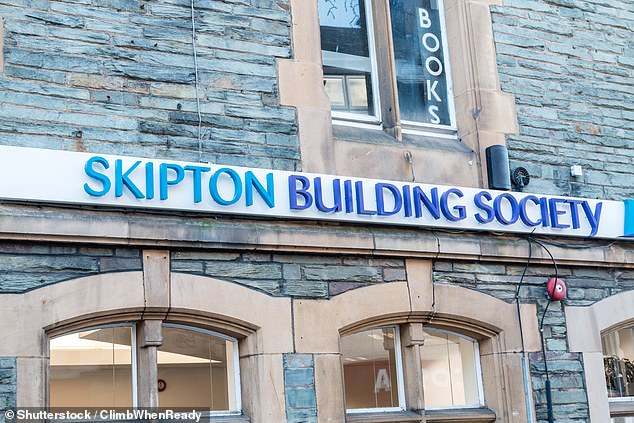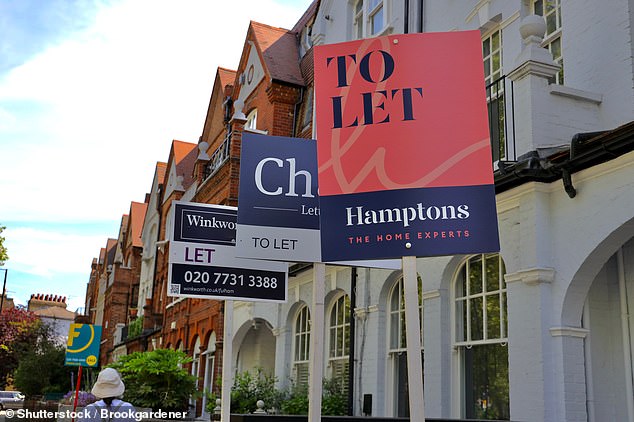Why I fear £10,000 fees to take out a mortgage may become the norm
You know something is wrong in the mortgage market when borrowers are willing to pay five figures just to get a new loan.
Yet this is exactly what a lender relies on. This week Skipton Building Society launched a mortgage with a fee worth 5pc of the loan value.
A borrower with a £200,000 mortgage would pay a cool £10,000 just for the privilege of re-mortgaging. That’s thousands down the road before you’ve even started paying any interest.
Look at the interest rates and you can see why Skipton is confident of attracting borrowers. They are relatively very cheap, ranging from £3.35 to £3.59 for a two-year fixed rate. The average two-year fixed rate deal is currently £6.41 according to MoneyfactsCompare.
Remortgage fees have been around for years. So far, though, they’ve been anywhere from £500 to £1,000 — £2,000 for the most expensive options.

Fee-weighted: This week Skipton Building Society launched a mortgage with a fee costing 5% of the loan value, but interest rates kept low at between 3.35% and 3.59%
Skipton says its loan is designed for existing borrowers who would otherwise struggle to pass the affordability criteria required to remortgage with a conventional loan.
Mortgage experts predict other lenders may follow suit with interest charges if Skipton’s proves popular.
They have also gained popularity in the buy-to-let market in recent months, with some loans charging up to 7 per cent.
I’m sure many households struggling with rising bills might jump at the chance to keep their mortgage payments under control for a few years – even if it means paying a hefty fee that will pay off over years or decades of interest if they add it to their mortgage balance.
It’s just the latest trick to make home ownership seem more affordable. In reality, the fees are little more than accounting gimmicks that simply redirect the financial pain further down the line.
Affordability criteria are in place to ensure that borrowers will be able to repay their loans even if interest rates rise or their own financial circumstances change.
But mortgage lenders’ innovative schemes to help borrowers qualify are not making home ownership more affordable.
They are only temporary measures put in place in the hope that circumstances will improve – which is great, unless they do.
If interest rates don’t fall, if house prices don’t rise again, if the pressure on household budgets doesn’t ease, there will be a lot of pain in the future caused by the same measures designed to ease it.
Smoke and mirrors
One such trick that is becoming increasingly popular is the long-term mortgage, spanning 30 or even 40 years. The number of borrowers who have taken out a mortgage for 35 years or more has doubled in the past five years and four times as many people will be paying off their loans in their 70s.
This type of mortgage looks cheaper in the short term, but adds tens of thousands of pounds in interest payments in the long term.

Rents: New-style loans have also been gaining traction in the buy-to-let market in recent months, with some loans charging up to 7%
However, borrowers who get these mortgages just to get on the property ladder do not have the option to extend the term further if their circumstances deteriorate.
The new mortgage charter — introduced by the industry last month to support borrowers — allows those struggling to switch to an interest-only mortgage for a short period.
Again, in the short term, mortgage payments become cheaper. But the mortgage will cost even more in deferred payments and added interest. Mortgages with high upfront fees appear to be the latest scheme in the same vein.
A borrower choosing a Skipton loan at 3.35 per cent would pay £985.23 a month, assuming a £200,000 mortgage over 25 years.
By comparison, they would pay £1,287 a month if they took Skipton’s conventional mortgage at 5.99% with no fee.
If they were taken up for the best two-year fix on the market – currently 5.28% with a £999 fee from Barclays – they would pay £1,202.04 a month, according to mortgage broker L&C.
Monthly costs may be cheaper, but over the next two years a Skipton lower rate borrower would pay £1,350 more than a Barclays borrower.
Of course, it makes sense to find solutions to help households through temporary squeezes. But my fear is if they become systemic.
I applaud Skipton for finding new ways to get its struggling members out of a temporary relationship. But high-fee mortgages can’t go the way of long-term mortgages and become a common tool to help borrowers.
Accessibility tricks should only be used in emergencies. If such mortgages become widespread, they will turn out to be nothing more than a ticking time bomb.
r.rickardstraus@dailymail.co.uk
Some links in this article may be affiliate links. If you click on them, we may earn a small commission. This helps us fund This Is Money and keep them free to use. We do not write articles to promote products. We do not allow any commercial relationship to affect our editorial independence.
